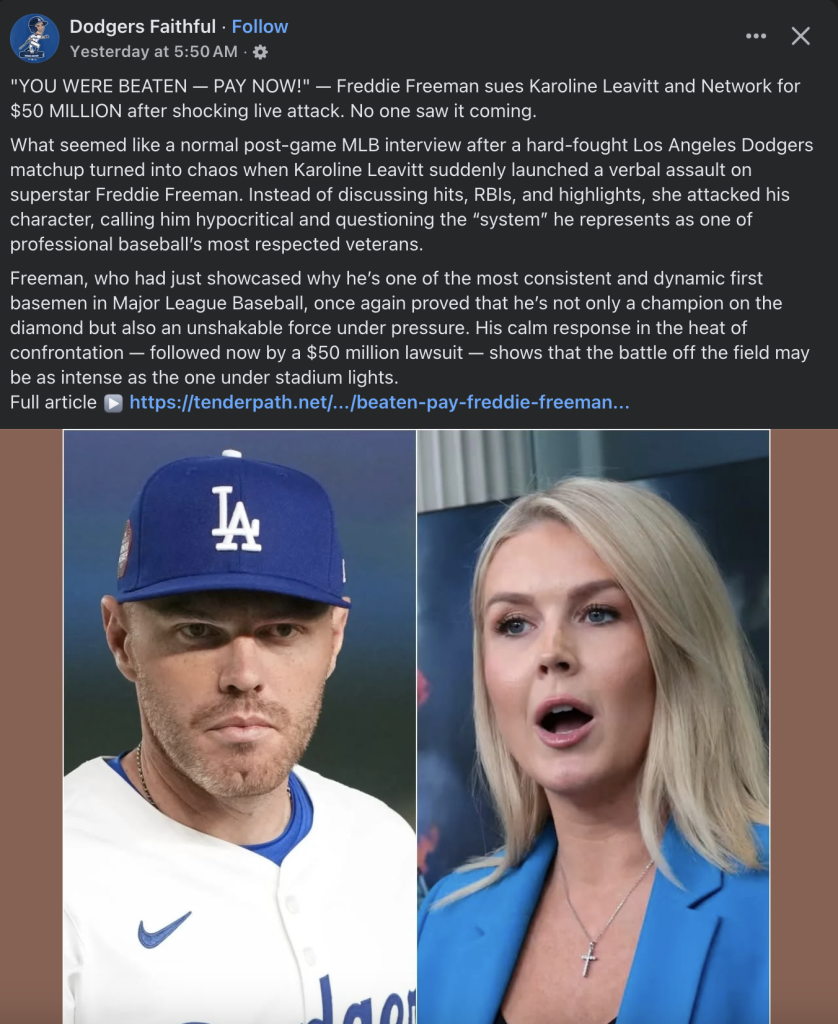As advertisers and professionals, we need to talk about what is happening on platforms like Meta.
The flood of AI-generated content designed purely for rage-bait and click-bait engagement has reached a disturbing level. This is not just low-quality content; it is Frankenstein storytelling. Entire “articles” are stitched together like a game of madlibs: take Freddie Freeman, add the White House Press Secretary, throw in Charlie Kirk, and suddenly you have a lawsuit and a network scandal. In the comments, the same account pushes a spinoff where The Rock’s daughter somehow weighs in on Major League Baseball Charlie Kirk.WHAT? On TikTok, the same story morphs into one about NFL superstar Freddie Freeman. Again, WHAT?
It is absurd. It is misleading. It’s hallucinations. And yet, it performs. The algorithm rewards this nonsense with reach and visibility, while advertisers are left positioned uncomfortably beside it.
The deeper problem is not only the creators but also the platforms that allow and profit from this churn. As long as engagement metrics drive revenue, and algorithms reward slop, we are subsidizing an ecosystem where credibility collapses and brand safety is treated as an afterthought.
The question we should all be asking: do we really want our advertising dollars funding an internet where madlibs pass as news?



Five Ways to Avoid Consuming or Believing AI Slop
- Check the Source
Always look for the original publisher or news outlet. If you cannot trace the story back to a reputable source, treat it as unverified. - Look for Consistency Across Platforms
If a story appears wildly different depending on whether you see it on Facebook, TikTok, or Instagram, that is a red flag. Authentic reporting should remain consistent. - Read Beyond the Headline
Rage-bait thrives on sensational headlines. Take a few extra seconds to read the body of the post and see if the details actually make sense. - Cross-Verify with Established News Outlets
When in doubt, check whether legitimate news organizations are reporting the same story. If the only source is a random social media account, it is likely AI slop. - Pause Before Sharing
Algorithms thrive on engagement. Before liking, commenting, or reposting, ask yourself whether the content has been verified or whether you might be amplifying misinformation.
This is not a youth problem alone. They are believing everything on TikTok while the older generations are believing everything on Facebook, Twitter (X), and Instagram. As a society, we have to learn to Trust but verify everything we share.

